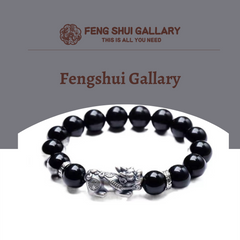The Basic knowledge of Feng Shui
Feng shui literally translates from Chinese as "wind" (Feng) and water ("Shui"). It's the art of arranging buildings, objects, space, and life to achieve harmony and balance. Feng shui works on the assumption that the world is driven by unseen forces. The idea behind it is to "unblock" the way, so the forces may flow freely and create balance in a space (or life).
The main difference between the practices of feng shui (or "Vastu" in the Hindu culture) and Western traditions is a belief that we as humans are connected to the spaces we inhabit. Believers in feng shui see sacred purposes and mystical meanings behind design -- not just artistically appealing buildings or superficially pretty surroundings. They view the world in terms of cosmic energy.
The yin-yang
This symbol is one of the most readily recognizable of Chinese culture. The black and white swooshes are connected, with a dot of the opposite color in each. The concept behind the yin and yang are that they are opposite states of chi (energy). One cannot exist without the other. Yin (black) is associated with femininity, matter, nighttime, coldness, passivity and softness, and yang (white) is about masculinity, spirit, daytime, warmth, activity and hardness. If you didn't have night, you couldn't understand what day is, so neither can exist on its own. In the world of feng shui, the yin and yang must be balanced.
While chi, and thus yin and yang, are constantly in motion, the symbol is traditionally displayed with the yang on top, under the assumption that heat rises.
The Five elements
The five elements—earth, metal, water, wood, and fire—come from the Taoist tradition. The elements are five interrelated phases in life that work together to create a complete system. Typically, the practice of feng shui works to balance these five facets in your home and each of your life areas or Bagua.
To incorporate the elements in your life and your home, you have to define where you want to focus your energy. Much like the Bagua, you choose the one to three areas of your life you want to improve. Then, you strengthen your energy and your home's energy by adding the suggested colors or shapes in that room.
For example, your Bagua shows that your bedroom aligns with your health, overall wellness, and the place where you rejuvenate. It ties into the earth element. Consider ways to incorporate earth tones, ceramic or clay pottery, stones, or crystals in that room. After you have made improvements there, focus on a couple of other rooms or areas of your life. Look at the corresponding elements in those rooms and welcome that positive change into your life by adding those elements. The intent is to bring positive energy to those rooms, those areas of your life, and, ultimately, your entire home.


